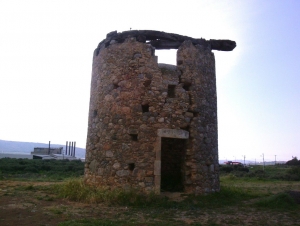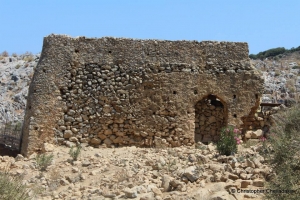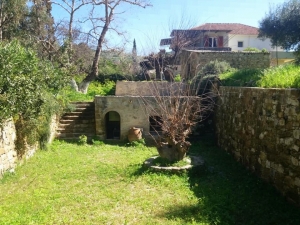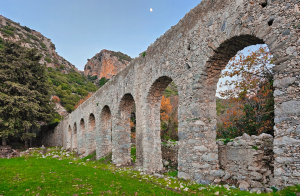On top of a hill just above the village of Gasi, by Arkalochori, in the area called Mili (mills) we meet an impressive windmill. The location is the highest of the whole area and offers unique views to the villages of the plain of Arkalochori. The windmill of Gasi is the only one that has survived. The windmill is of the type of xetrocharis which is circular and is able to rotate according to the wind direction. This type of windmill was quite common in Heraklion, white at Lassithi we meet the oblong type of Xetroharis (stable mill).
The Mill of Gazepis near the village Nipiditos has been declared a protected monument by the Modern Monuments Service. Here, Mathios Apostolakis from Nipiditos who was called with the nickname Gazep (ie "reactionary"), in the 19th century built a windmill.
Bitzariano is a small abandoned scenic settlement close to Kastelli, Pediada district, and a suburb of Karouzana village. It name is taken after the surname Bitzarakis. Near the village runs the river that gathers water from the north Kasteli plain. The value of water was very high, as the locals built many watermills in order to shred the grain of the area.
On the road that connects village Vori with the palace of Phaestus and next to the banks of river Geropotamos, we meet the ruined watermill of the area that locals call Gerontomylos (old mill). It is said that the area around the mill was a favorite place for the Greek writer Nikos Kazantzakis.
In the village Potamida, province Kissamos, lies the Kalogridis family watermill. The watermill was restored in 2013 by the locals and became operational again. The locals in the past used to bring their cereals to the watermill. Then, with the help of water, the millstones turned the mill, producing the precious flour.
The watermill of Agia Fotia is located below the church of Saint Photini (Agia Fotia), at the exit of the Agia Fotia Gorge at the foot of Mount Vorizis and very close to Spili.



















































































